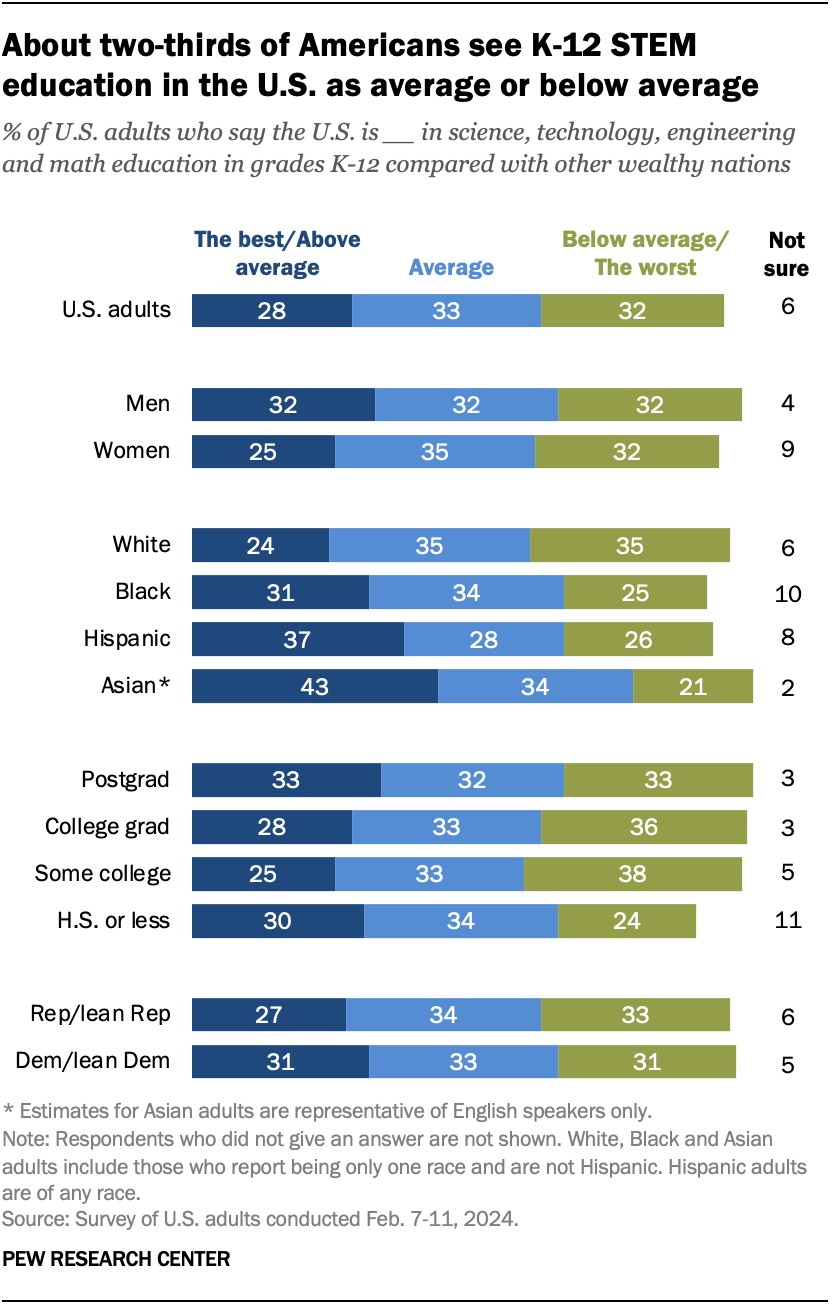The U.S. education system often faces scrutiny and comparisons to other developed nations. A recent Pew Research Center survey reveals that a majority of Americans believe K-12 STEM (Science, Technology, Engineering, and Mathematics) education in the US is average or below average compared to other wealthy countries. This perception aligns with recent international standardized test results, particularly in math. However, U.S. students perform above average in science compared to their global peers.
American Perceptions and International Reality
Only 28% of American adults believe the US provides the best or above-average K-12 STEM education compared to other affluent nations. A third rate US STEM education as average, while another 32% consider it below average or the worst. This pessimism is more pronounced among certain demographics. White Americans are less likely than Black, Hispanic, or English-speaking Asian Americans to rank US K-12 STEM education as above average or the best. Fewer women than men share this positive view as well.
Interestingly, Democrats and Republicans hold similar views on K-12 STEM education quality, with roughly 30% of each group rating it as above average or best. These opinions remain consistent with a pre-pandemic 2019 survey, suggesting the pandemic’s impact on education hasn’t significantly altered public perception.
A Deeper Dive into STEM Test Scores
Data from the Program for International Student Assessment (PISA), which assesses 15-year-olds in math, reading, and science across OECD countries, provides a clearer picture of US student performance. The 2022 PISA results reveal a mixed performance for US students:
Math: U.S. students ranked 28th out of 37 participating OECD countries in math, placing them below average. While average math scores declined in the US and 25 other OECD nations between 2018 and 2022, the US ranking remained relatively stable.
Science: In contrast, U.S. students performed above average in science, ranking 12th out of 37 OECD countries. The US average science score remained virtually unchanged from 2018, while fewer countries experienced significant declines in science scores compared to math.
Conclusion
The US education system, particularly in STEM fields, presents a complex picture. While public perception leans towards a negative assessment, international test scores reveal a nuanced reality. US students lag behind their peers in math but demonstrate above-average performance in science. Understanding these strengths and weaknesses is crucial for informing education policy and ensuring American students remain competitive on the global stage.

